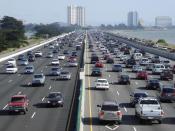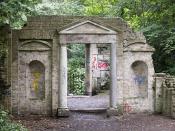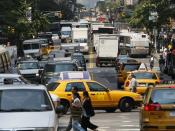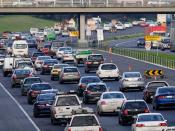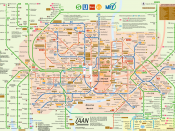Increased Traffic In Our Cities In today's large towns and cities there is an increasing problem with he amount of traffic. It is no longer just a rush hour hitch but a serous congestion of an essential network that feeds our daily existence. Town planners and architects alike, have for several years, been trying to solve this escalating dilemma but alas to no avail. Is the problem solvable? Or will it just be a burden we will have to bear.
Governments around the world have levied substantial taxes on fuel and uneconomical vehicles. This is a desperate attempt to reduce the traffic on our roads and to improve the environment. The idea is quiet simple, to pressure people into using public transport, making the average trip into town too expensive for a car. Acts that will in some way, they hope, make people re-evaluate their means of transportation. It is a sound plan that has had little or no effect on our road systems.
Instead we are paying more for the transportation of essential consumer products and services. Hitting hard the families that are reliant on a car for the complicated task of combining child supervision and work.
Another popular countermeasure has been the increasing of car parking fees in the city centre. Rates for parking can be expensive with hefty fines for those who chance the system. To leave a car for a couple of hours can seriously damage your wallet. The surprising thing is that when we travel into town centre we can never seem to find a parking place. What is this telling us then? People are prepared to fork out the hefty toll asked for. And when we look at the structure of a city, the cinemas, restaurants, pubs and of course offices all lie central. When a town organises large activities such as a sport or music event they want people to come into the centre and spend their money. Ample cheap parking should always be available close to the event, somewhat dismissing the car free city center that they strive for.
There is one solution that already exists in most large towns, public transport. It is a service that has an infrastructure that dates back many decades. A facility overloaded, old-fashioned and inflexible, that has lacked funding for many years. We have a service that does function to the best of its ability, but way under the needs of its patrons. Constrained by local governmental bylaws restricting the laying of new tracks or construction of bus lanes in certain areas. Starved of valuable investment capital and new rolling stock. Unable to recruit adequate personnel to cover the demanding shift system, or increase the salaries of the already overworked staff. It is no wonder they struggle to keep to the already demanding timetables.
We, as a society, must decide the future of our transport network, and at what price we are willing to pay. Should we cripple the people who are reliant on cars by increasing the daily cost, or should we build an attractive alternative that people will find hard to refuse. Public transport should not be a way of earning money or making large profits. It is a solution to an ever-increasing social and environmental dilemma. It is a solution that must be seen as the only alternative, as time and space seem to be running out for our beloved car. This is an investment into a new lifestyle that will benefit our health, environment and our children. We must plan for the future; it is a problem that will never go away.
